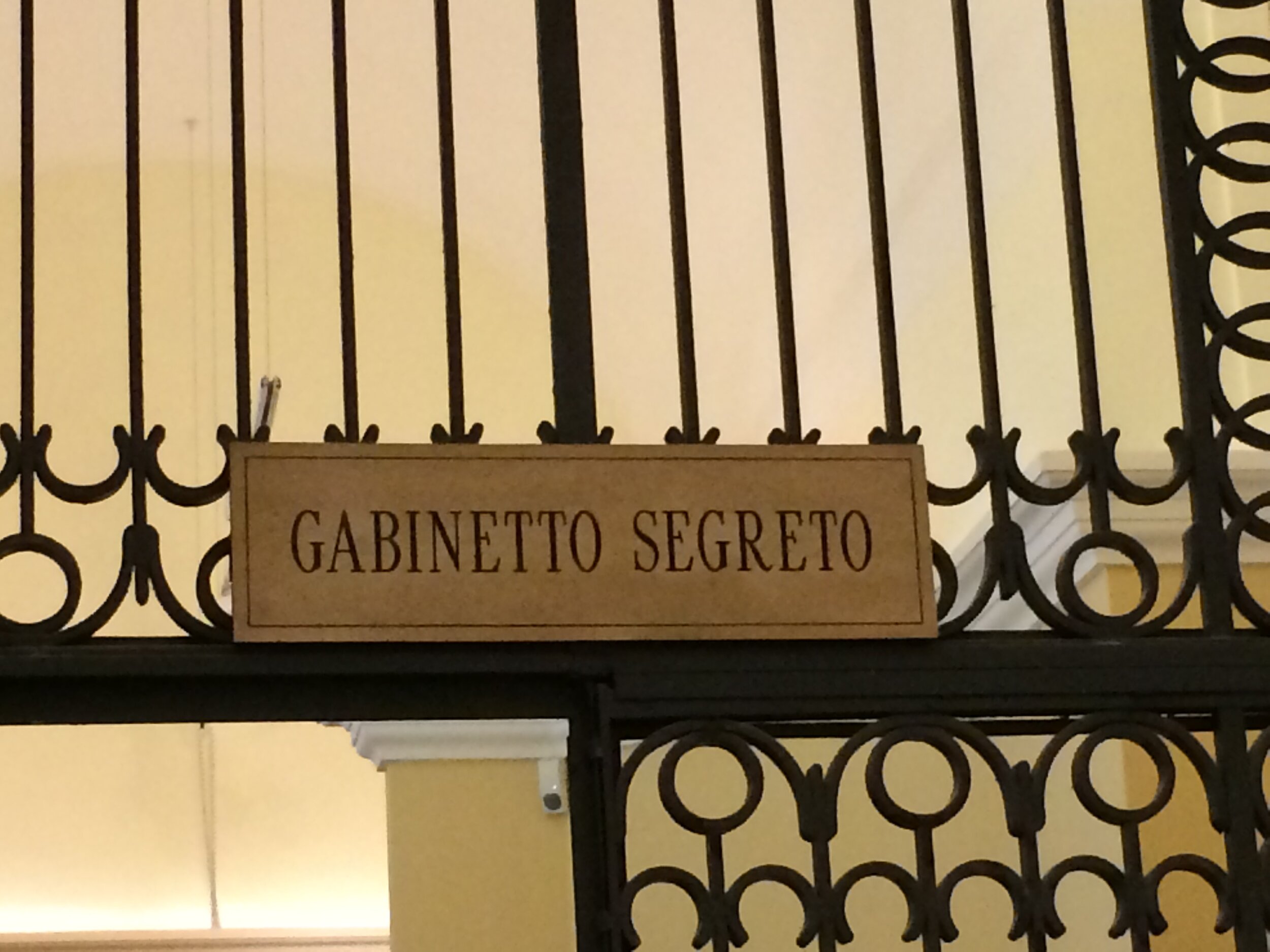Spots in Napoli
Teatro di San Carlo
This grand opera house was built in 1737 at the request of the first king of Bourbon, Charles III. This makes it “the oldest continuously active venue for opera in the world, having opened in 1737, decades before either Milan's La Scala or Venice's La Fenice” according to the theatre’s official website. When I spent a weekend in Napoli a few years ago, we took a guided tour of the space; it was well worth it! The interior is stunning with the predominance of rich red velvet and gold leaf, complete with “the central frescoed ceiling painting of Apollo presenting to Minerva the greatest poets of the world was painted by Antonio, Giuseppe e Giovanni Cammarano.”
The opera house was partially destroyed by fire in 1816 and by bombs during World War II; however, rebuilding and continuing to operate the important cultural hub for music was a priority. Do visit and learn more about the history, or even better, see a performance. The season is currently suspended due to COVID 19; however, you can find out more about upcoming performances on the website.
National Archeological Museum
This important museum houses many of the treasures from the archeological sites of Pompeii and Herculaneum that need to be protected in a safe space, away from the elements. The museum, like the Teatro San Carlo, was initiated by Charles III of Bourbon. The building structure has existed since the end of the 16th century, however, when it was used as a cavalry barracks. It was also a seat of the University of Naples until repurposed as a museum in 1777. From this point, it was a private collection under the royal Bourbon family, until it became national in 1860, around the time of Italian unification. Because Charles’ mother was Elizabeth Farnese, he inherited an extensive collection of Greek and Roman antiquities and marbles; however, the most ‘exciting’ part of the collection is contained in the Gabinetto Segreto (Secret Cabinet). On display in this area of the museum are erotic works or works of a sexual nature; many of them from the excavations at Pompeii and Herculaneum. It is human nature, of course, to be intrigued, and I must say, this is the most titillating part of the museum.
Castel Sant’Elmo
This ‘castle’, which took the place of a 10th century church, is located on a hilltop. The church was dedicated to Saint Erasmus, and other the centuries the name morphed into ‘Elmo’ and so it is called Castel Sant’Elmo today. There are documents that recognize a structure in this spot from 1275, but according to Lonely Planet “in 1349, Robert of Anjou turned it into a castle before Spanish viceroy Don Pedro de Toledo had it further fortified in 1538.” You will be able to learn more about the complex history upon visiting and exploring the star shaped fortress. Yet, one of the most compelling reasons to visit is that it is a part of ‘upper Naples’ and you can gaze over ‘lower Naples’; specifically, you can look down into the Piazza del Plebiscito and down to the sea. The views are a great reason to fit the Castel into your ‘spot’ selection in Napoli. Furthermore, as mentioned, the Castel Sant’Elmo is located in ‘upper Naples’, and this entire area is worthy of exploration. Combine a visit with some meandering in the Vomero surrounding area.
You have probably heard the Neapolitan song ‘Funiculi, Funicula’ (and have no idea what it is really about), it is enough to know that it commemorated the opening of the first funicular railway. Thus, the ‘funicular’ is strangely associated with Naples and the region of Campania because this strange song soared to such popularity. I would recommend taking the Vomero funicular from bottom to top. It is, in fact, just another mode of public transportation in Napoli, and the ticket is inexpensive, but riding at least one funicular in Naples is fundamental. Find out more here.


